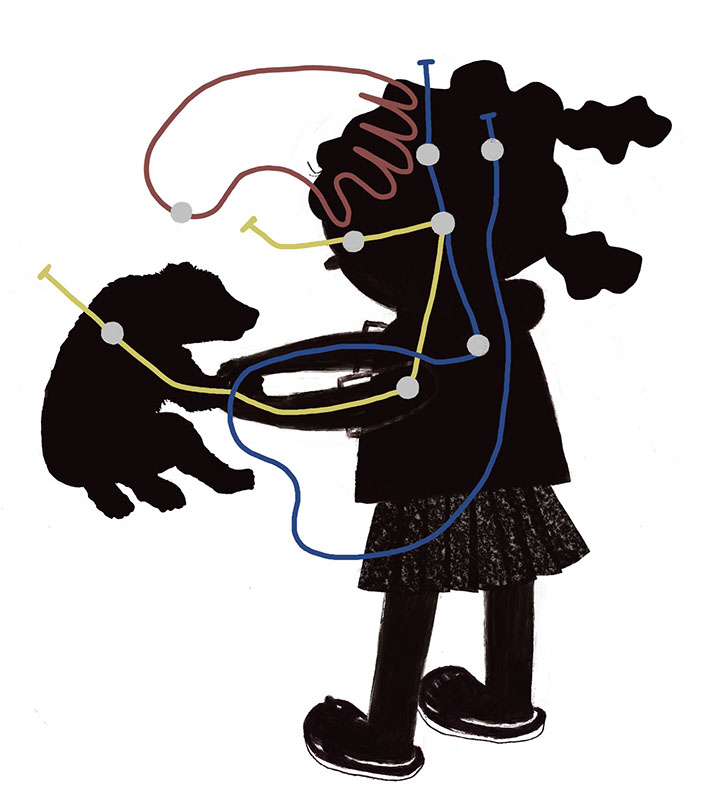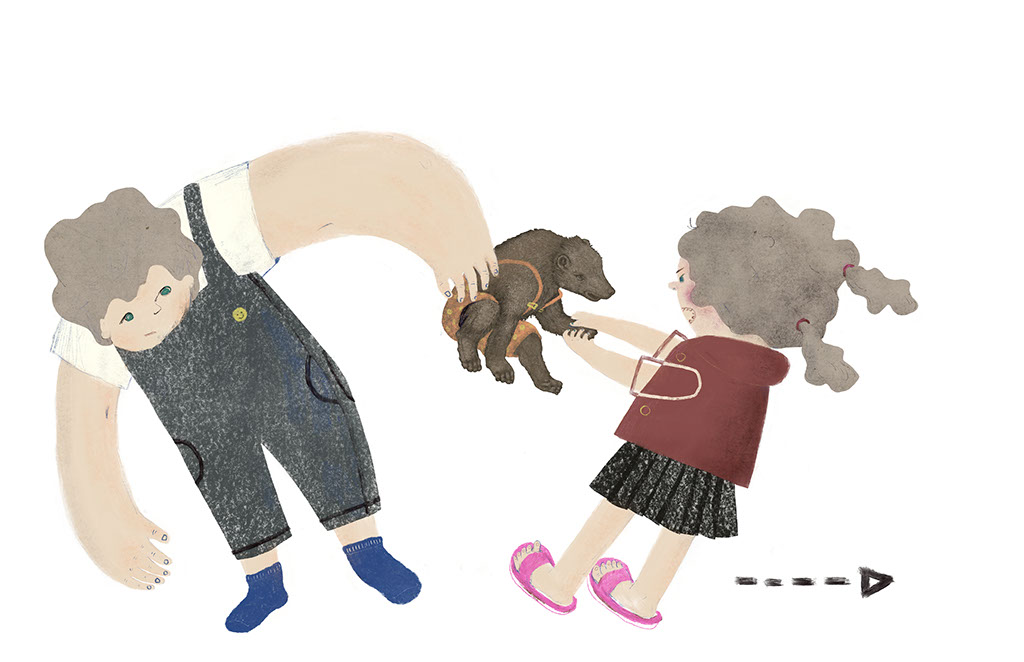Although guilt and shame share similar characteristics, they are distinct emotions. We explore the differences between each emotion to ensure that caregivers have a better understanding of how to foster healthy guilt in children and avoid instilling shame.
Guilt and shame are emotions that begin to develop early in life and continue “to develop over time as children form a more stable sense of self” (Parisette-Sparks et al., 2017; Malti, 2020). Children may have their first basic experience with guilt and shame around 2–3 years old (Bafunno & Camodecca, 2013). Guilt and shame are often used interchangeably, and although they are both in the same self-conscious moral emotion family, they are two distinct emotions (Malti, 2016; Eisenberg, 2000). It is crucial that those who care for children understand the differences between these emotions.
Guilt is about behaviour and doing something wrong. It can be healthy or unhealthy. When a child experiences healthy guilt, they feel remorse and regret, but this “does not affect their core identity” (Eisenberg, 2000).They may also be encouraged to try and make amends (Eligh, 2017). In other words, they are not their behaviour, and behaviour can change and improve over time, with healthy guilt helping to clear the pathway forward.
On the other hand, shame is about self-worth and the feeling of being something wrong. It is always unhealthy. When a child experiences shame, they feel bad about who they are internally (Copeland, 2018). They may think that they are “bad,” so they may be less motivated to try to make amends after doing something wrong. To further distinguish healthy guilt from shame, the illustration on the next page highlights their differences and provides strategies for how caregivers can foster healthy guilt in children, rather than inadvertently instill shame.

INNER MAP OF
HEALTHY GUILT & SHAME
Healthy Guilt
4
1
2
3
3
1
1
4
Shame
What can I do?
Healthy Guilt
What can healthy guilt look like?
A child takes their friend’s toy without asking.They may think, “I took my friend’s toy and now he is sad. I should say sorry and give it back.”
What can it sound like?
“I made a bad choice.”
What type of behaviour can I look out for?
• Trying to fix or repair the consequences of their bad choice (e.g., wanting to give the toy back)
• Confessing to caregivers about their poor choice
• Wanting to apologize to the victim for their wrongdoing
What is it?
When a child feels sadness and regret after doing something wrong and understands that they have hurt someone (Malti, 2020).
(Bafunno & Camodecca, 2013; Drummond et al., 2017; Horrell, 2022)
1
2
3
4
Shame
What can shame look like?
A child takes their friend’s toy without asking. They may think, “I am a bad friend because I stole my friend’s toy.”
What can it sound like?
“I did something bad. That means I am bad”
What type of behaviour can I look out for?
• Averting their eyes (e.g., gaze avoidance)
• Slumping their head
• Aggression and outbursts of anger
• Acting reserved or distant
• Bodily avoidance (e.g., moving away, backing up, and withdrawing)
What is it?
When a child links their negative behaviour to their self-worth and identity.
(Bafunno & Camodecca, 2013; Drummond et al., 2017, Malti, 2020; Horrell, 2022)
1
2
3
4
What can I do?
1
What can I do?
When children do something wrong, it is our role as caregivers to ensure that we do not cause them to feel shame, but instead encourage healthy guilt to foster future prosocial behaviour (Rote & Smetana, 2017). This can be done by calmly and kindly helping the child understand the clear link between their actions and the emotional consequences (Eisenberg, 2000; Malti, 2016).
Using the same example of a child taking their friend’s toy, you may say, “Your friend is crying. They feel sad because you took their toy without asking them.” It is important to focus on the child’s actions, not their character as that can cause feelings of shame in the child and affect their sense of self (Rote & Smetana, 2017).
From there, you can talk with your child about what a good solution or outcome could be to make up for their poor choice.
In contrast, when children do something good or kind, caregivers should promote self-kindness by verbally praising and acknowledging their child’s behaviour (catch them doing something good!), as this can lead to increased self-esteem and better decision-making (Spinrad & Gal, 2018).
Ultimately, it is imperative that as caregivers, we teach children that if they make a mistake, that does not mean they are a mistake. Children will make poor choices, and it is our job to help them acknowledge, learn, and grow. This will lead to better and kinder behaviour in the future.

